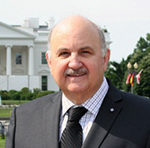By Shoshana Bryen and Stephen Bryen


WASHINGTON, D.C. — With the establishment of the Defense Innovation Unit Experimental (DIUX), Secretary of Defense Ash Carter is putting a lot of effort into building a relationship with Silicon Valley, hoping some — but not too much — of the region’s entrepreneurial, cutting-edge methods rub off on the US military.
There are many good things to be said for Silicon Valley, its weather and its methods, but it is not known for its patriotism or its interest in national security. Indeed, it is known for its international workforce, which may be directly inimical to national security in certain cases. But mostly, the valley is known for its interest in profits, big multiples on investment and expanding markets.
After a slow start, Carter is doubling down on the bet by starting a second center in Boston.
Instead of “outposts” in locations that have little affinity for national defense requirements, the Defense Department would better exploit capabilities it already has but barely uses. That is, DoD should start redefining its use of the National Guard and reserves, where patriotism, national security, and scientific and technological “smarts” converge.
Over the past decade, the Guard and reserves in all services served in Iraq, Afghanistan and elsewhere. While their service has put a considerable strain on the system, it has also exposed thousands of trained and dedicated soldiers, sailors, airmen and Marines first-hand to problems that confront our fighting forces. When they return to their civilian occupations, they work in business and industry, in R&D, and in academia. They have skill sets that, if properly channeled, can be a bonanza for the Defense Department. Carter has approached this idea by creating a reserve unit specifically for DIUX, led by a Navy Reserve commander who is also an Apple vice president.
Thus far, however, while there are a few units focused on cyber security and intelligence, there is no direct path for converting military experience into products and technology for national security. We need a coordinated approach to the reserves and Guard that works for the 21st century.
1. Virtual Reserve High-Tech Units
Reserve units are largely constructed by geography but increasingly, we live in a virtual world based on the Internet, high-speed connectivity and Cloud systems. An engineer in Seattle can work with a counterpart in Texas and another in New Jersey with ease. And he can work from his office, from home, or on the road. The virtual model would be a terrific way to organize reserve units by providing secure platforms and secure Cloud connections to reservists investigating specific subjects or jointly working on specific projects. On top of creating collaboration among reservists, virtual high-tech units can also integrate the participation of national laboratories and contractors, creating a holistic approach to problem solving and engaging the best talent regardless of geography. Virtual reserve units don’t have to travel — they could log time spent, and the money and time saved can be wrapped into productive work.
2. Venture-backed Reserve Spinoff Enterprises
Reserve units will inevitably generate new products and intellectual property that can be turned over to a contractor or form the basis of a new enterprise that could be run by reservists. These will often be directly aligned with Pentagon requirements, and the military services or DoD will be an immediate customer, making them very attractive in venture capital circles. The Foreign Comparative Testing Program (FCT) already practices the principle. FCT will support a foreign technology if, in advance, a military service has agreed to buy it if it meets expectations after testing. If this can be done for foreign technology, why not for technology developed by American military reservists?
Venture capital companies can be invited to join into a DoD-approved consortium. In exchange for advice to reserve spinoff startup enterprises, venture capital companies would be given a chance to invest in these enterprises. DoD would ensure terms and conditions consistent with industry standards, ethical, and in DoD’s long-term interest.
3. Special Reservists
There are many patriots in industry with a lot to offer in the form of mentoring and leadership, as well as scientific and technical know-how. In past years, when the US mobilized it often recruited top executives, some of whom were put in uniform and served magnificently.
David Sarnoff, chairman and president of RCA, served in the Army at the start of World War II and was called up three times. He was commissioned a brigadier general in 1945, and performed many services of great wartime importance. He regarded becoming a general as the highlight of his life. When he died in 1971, he was buried with his general’s star, so much did he regard the honor afforded him.
More recently, Silicon Valley’s Bob Noyce (sometimes called the “statesman” of Silicon Valley) helped Stephen Bryen when he was director of the Defense Technology Security Agency. In 1982, Bryen visited Intel, which Noyce co-founded, to learn about Intel’s success in microprocessors. But in the wide-ranging discussions held there, Bryen asked Noyce to lend his expertise to help better protect the technology of the Minuteman ICBM program. This he did — as a volunteer — and his help was invaluable. While there was no formal program to support Noyce’s work, the idea of special reservists makes great sense because of what it can do for national security. If properly organized, special reservists can serve by helping evaluate projects and programs, giving valuable management advice and acting as mentors for reserve organizations.
4. National Registry
DoD should create a national registry of the specific expertise of currently serving reservists and retired members of the Guard and reserves. This would allow the Pentagon to enlist their support to cover specific needs, such as artificial intelligence for robots, making weapons smarter, improving intelligence gathering, enhancing cybersecurity, working with new materials such as nano particles, etc. In addition, a national registry could be expanded to include non-reserve experts and managers who are willing to volunteer their services to our country.
One reason the DIUX model is problematic is the security model of the America’s high-tech industry. Silicon Valley and Boston are filled with foreign nationals and much of the development work is outsourced — including to nationals of countries whose national aims may be different from ours, including China. For civilian applications that are nonsensitive this may be an acceptable paradigm — provided it does not shortchange American workers, but when it comes to security it is a nonstarter.
Hiring thousands of people and spending billions to mitigate the security weaknesses of Silicon Valley-produced electronics and software is not the best course of action for DoD. Instead, let’s use the reserves to power America’s innovation in defense systems and enhance the security of products and technology needed for national defense.
*
Shoshana Bryen is senior policy director for the Jewish Policy Center. She may be contacted via shoshana.bryen@sdjewishworld.com. Her husband Stephen is a senior fellow in defense studies at the American Foreign Policy Council. Comments intended for publication in the space below MUST be accompanied by the letter writer’s first and last name and by his/ her city and state of residence (city and country for those outside the United States.)